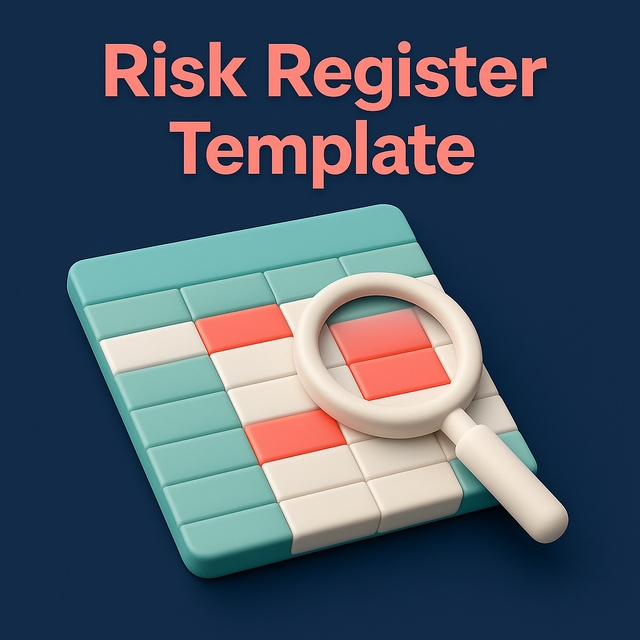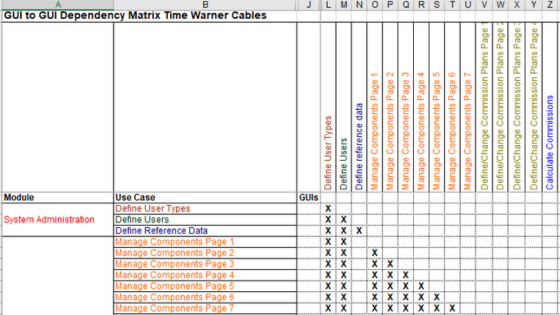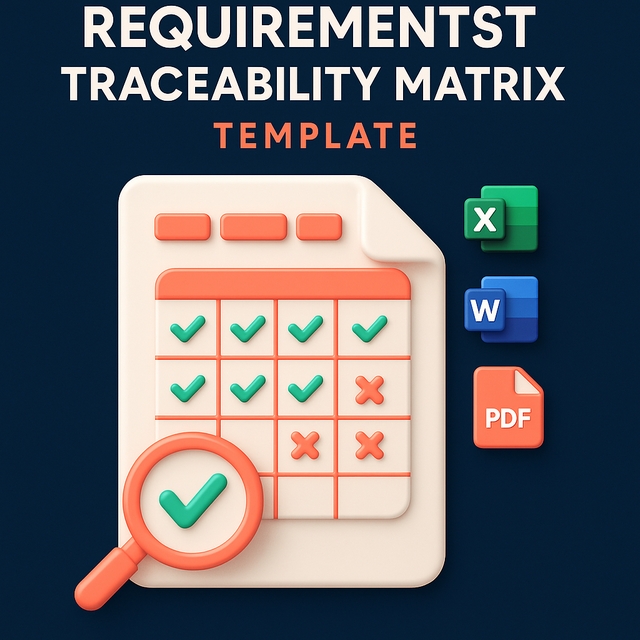Table of Contents
Risk Register Template
1. What is a Risk Register in QA?
A Risk Register is a structured tool used in software testing to log, analyze, and monitor potential risks that may affect project timelines, quality, or delivery. It provides visibility into issues like technical dependencies, schedule delays, or resource shortages.
2. Why Risk Management Matters in Testing
QA teams face constant challenges, from missed deadlines to integration issues. A Risk Register ensures:
- Early identification of risks
- Prioritization by severity and probability
- Proper mitigation planning
- Transparency for stakeholders
Without it, projects risk unexpected failures, budget overruns, and poor-quality outcomes.
3. Columns Explained
Your Risk Register Template includes the following fields:
- ✅ Risk ID – Unique identifier for tracking
- ✅ Description – Detailed explanation of the risk
- ✅ Category – Schedule, Technical, Resource, or Compliance
- ✅ Probability – Low, Medium, High likelihood of occurrence
- ✅ Impact – The severity if the risk occurs (Low, Medium, High)
- ✅ Mitigation Plan – Preventive or corrective actions
- ✅ Owner – Person responsible for monitoring/resolving the risk
- ✅ Status – Open, Mitigated, or Closed
4. Sample Risk Register (with sample data)
| Risk ID | Description | Category | Probability | Impact | Mitigation Plan | Owner | Status |
| R001 | Schedule delays due to resource shortage | Schedule | High | High | Assign backup testers | QA Manager | Open |
| R002 | API integration issues with third-party system | Technical | Medium | High | Use mock APIs for early testing | Dev Lead | Open |
| R003 | Incomplete requirements documentation | Process | Medium | Medium | Organize BA review meetings | Product Owner | Mitigated |
| R004 | Test environment downtime | Infrastructure | Low | High | Add cloud backup environment | IT Admin | Open |
5. FAQs
Who should maintain the risk register?
Typically, the Test Manager or Project Manager maintains it, but inputs come from the entire QA and Dev team.
How often should a risk register be updated?
At least once per sprint in Agile projects or weekly in Waterfall.
Can the same template be used for UAT or production risks?
Yes, the template is flexible and can be extended for UAT and production phases.



